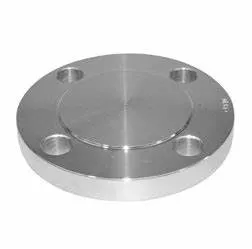-
Cangzhou Yulong Steel Co., Ltd.
-
Phone:
+86 13303177267 -
Email:
admin@ylsteelfittings.com
- English
- Arabic
- Italian
- Spanish
- Portuguese
- German
- kazakh
- Persian
- Greek
- French
- Russian
- Polish
- Thai
- Indonesian
- Vietnamese
- Zulu
- Korean
- Uzbek
- Hindi
- Serbian
- Malay
- Ukrainian
- Gujarati
- Haitian Creole
- hausa
- hawaiian
- Hebrew
- Miao
- Hungarian
- Icelandic
- igbo
- irish
- Japanese
- Javanese
- Kannada
- Khmer
- Rwandese
- Afrikaans
- Albanian
- Amharic
- Armenian
- Azerbaijani
- Basque
- Belarusian
- Bengali
- Bosnian
- Bulgarian
- Catalan
- Cebuano
- China
- China (Taiwan)
- Corsican
- Croatian
- Czech
- Danish
- Esperanto
- Estonian
- Finnish
- Frisian
- Galician
- Georgian
- Kurdish
- Kyrgyz
- Lao
- Latin
- Latvian
- Lithuanian
- Luxembourgish
- Macedonian
- Malgashi
- Malayalam
- Maltese
- Maori
- Marathi
- Mongolian
- Myanmar
- Nepali
- Norwegian
- Norwegian
- Occitan
- Pashto
- Dutch
- Punjabi
- Romanian
- Samoan
- Scottish Gaelic
- Sesotho
- Shona
- Sindhi
- Sinhala
- Slovak
- Slovenian
- Somali
- Sundanese
- Swahili
- Swedish
- Tagalog
- Tajik
- Tamil
- Tatar
- Telugu
- Turkish
- Turkmen
- Urdu
- Uighur
- Welsh
- Bantu
- Yiddish
- Yoruba

Oct . 14, 2024 04:43 Back to list
Exploring Various Types of Coupling Threads and Their Applications
Understanding Coupling Thread Types
When it comes to mechanical engineering, particularly in the fields of piping, plumbing, and construction, the term coupling refers to a device used to connect two sections of pipe or other cylindrical objects. The integrity and efficiency of these connections are crucial for various systems, and one key aspect of couplings is the types of threads used. In this article, we will explore the different coupling thread types, their applications, and considerations for selecting the right one.
What Are Coupling Threads?
Coupling threads are helical structures that are designed for fastening and securing two components together, allowing for a leak-proof, strong, and often removable connection. They come in various standards and profiles, each suited for different applications and materials. The three most common types of coupling threads are National Pipe Thread (NPT), British Standard Pipe Thread (BSP), and Metric Threads.
1. National Pipe Thread (NPT)
NPT is a U.S. standard for tapered threads used on cylindrical fittings and pipes. It is designed to ensure a tight seal when the male and female threads are tightened together. The tapering of the threads allows them to compress and fill any spaces, minimizing the risk of leaks. NPT is widely used in North America for industrial, commercial, and residential applications, particularly in plumbing and gas systems.
One downside to NPT threads is that they are sensitive to over-tightening, which can result in deformation and difficulty in disassembly. As such, it's important to apply the correct torque during installation for optimal results.
2
. British Standard Pipe Thread (BSP)BSP threads are a British standard used primarily in countries that follow British engineering standards. Unlike NPT threads, which are tapered, BSP threads can be either parallel (BSPP) or tapered (BSPT). BSPP threads are typically used with O-rings to create a seal, while BSPT threads are similar to NPT in terms of tapering.
coupling thread types

BSP threads offer a higher degree of compatibility with various fittings compared to NPT threads, making them popular in international applications. However, when working across standards, it's essential to ensure proper conversions and fittings are used to avoid leaks.
3. Metric Threads
Metric threads, used widely around the globe, are typically specified according to the International Organization for Standardization (ISO) standards. Unlike NPT and BSP, metric threads can be either coarse or fine, allowing for various applications depending on the requirements of the project.
Metric threads are versatile and are often found in automotive applications, machinery, and fasteners. They offer benefits such as a finer pitch for better adjustment and less likelihood of thread stripping.
Choosing the Right Coupling Thread
Selecting the appropriate coupling thread type depends on several factors
- Application Consider the environment in which the connection will be used. For plumbing and gas, NPT might be preferred, while for international systems, BSP or Metric might be more appropriate. - Material Different materials may require specific thread types to ensure compatibility and durability. - Pressure and Temperature High-pressure or high-temperature applications may necessitate particular thread types designed to handle these conditions without failure.
Conclusion
In summary, coupling thread types are essential considerations in the design and installation of piping and plumbing systems. Understanding the differences between NPT, BSP, and Metric threads—and the applications for which they are best suited—enables engineers and technicians to make informed decisions. Proper selection not only enhances the reliability of the connections but also prevents costly failures or leaks. As systems evolve and standards adapt, staying informed about coupling thread types will continue to be crucial for effective engineering practices.
Latest news
-
ANSI 150P SS304 SO FLANGE
NewsFeb.14,2025
-
ASTM A333GR6 STEEL PIPE
NewsJan.20,2025
-
ANSI B16.5 WELDING NECK FLANGE
NewsJan.15,2026
-
ANSI B16.5 SLIP-ON FLANGE
NewsApr.19,2024
-
SABS 1123 FLANGE
NewsJan.15,2025
-
DIN86044 PLATE FLANGE
NewsApr.19,2024
-
DIN2527 BLIND FLANGE
NewsApr.12,2024
-
JIS B2311 Butt-Welding Fittings LR/SR 45°/90° /180°Seamless/Weld
NewsApr.23,2024











